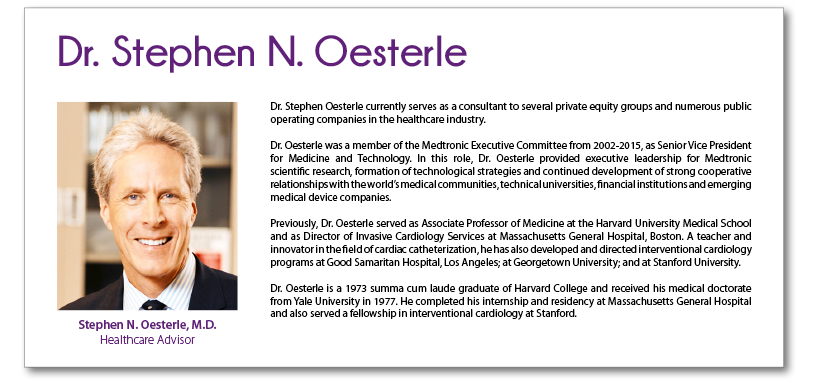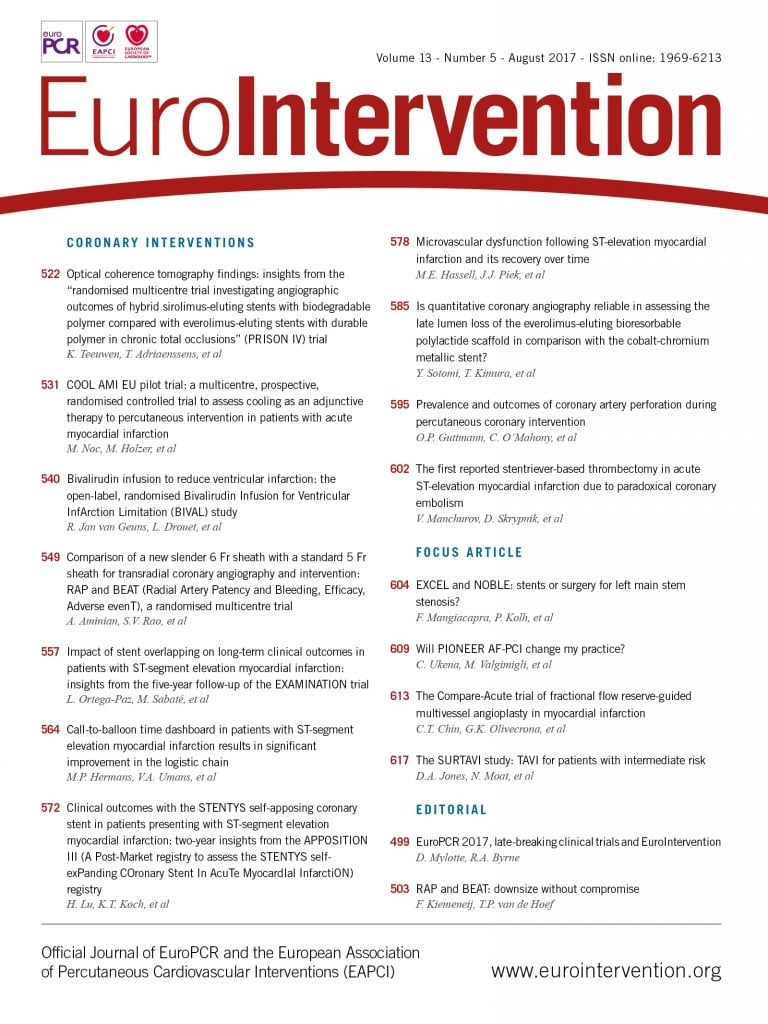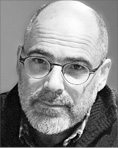
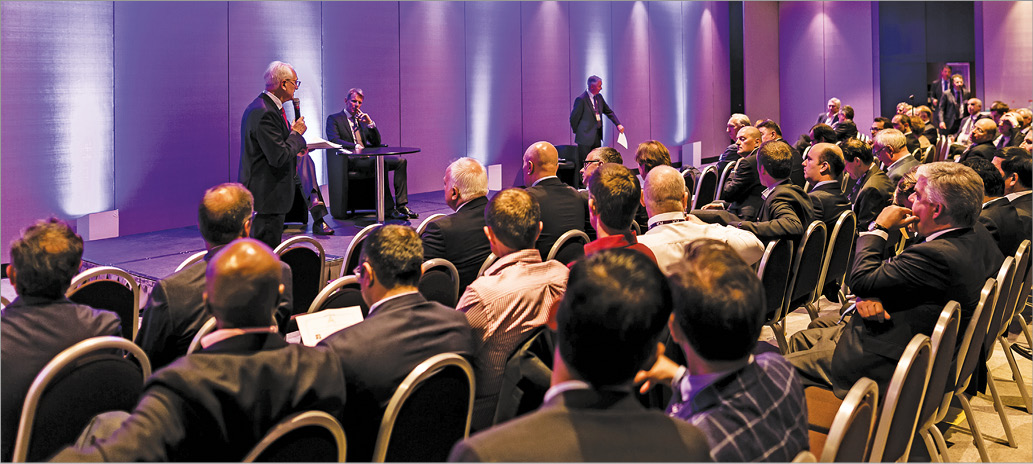
Background
During EuroPCR 2017 in Paris, we invited Stephen Oesterle and Jens Deerberg-Wittram to join us at “PCR Presidents & Friends Dinner”, and to speak to the guests about the future of our profession and healthcare in general. The presentation and provocative discussion that followed challenged many of our ideas and inspired an exchange and dialogue which we believe needs to be expanded upon and continued by the larger community. Following is a summary and reflection on this evening.
For the biographies of the two invited speakers, please see the appendices following this editorial (Appendix 1, Appendix 2).
Where do we stand today?
This year we have been celebrating the early days of angioplasty, the novel procedure that led to the creation of our specialty, ushering in the age of less invasive, interventional medicine. From the beginning, the concepts of innovation and delivery of care were never mutually exclusive for us, but an integral part of our mindset, and we wonder how these concepts are impacted by the complex situation of societal constraints, technology and economics that we face today. Our goal has always been to seek techniques that will benefit our patients, so it is natural to reflect on the existing conditions and see how we can move forward and continue to evolve.
Stephen N. Oesterle pointed out that today just about every part of society has been disrupted by technology or software –every job, every function has been forced to evolve faced with this inevitable change, with one late entry, medicine. For him, as well as for many of us, it now appears clear that software disruption is finally reaching medicine and healthcare, further underlining the need to understand what is happening, consider where we stand in relation to these changes, and what role practising physicians will ultimately play in the upcoming revolution – for ourselves and for our patients.
This future takes on a further importance –almost an urgency– as we try to come to grips with not only our own unmet needs, but also the challenge of continuing to provide quality healthcare services to our individual societies, as well as expanding treatment to the world at large. Jens Deerberg-Wittram spoke of the “small evolutions” that are now occurring, warning that “we are going through a phase creating new disparities in healthcare”, which will mean that, if we continue as we are today, “some patients will get access to value-based care while others nothing at all”, bringing with it the very “real danger of widening an already existing chasm that will be increasingly hard to fill.”
The “PCR Presidents & Friends Dinner” was the opportunity to address these issues in front of an audience composed of many different players in the interventional field –the current and past presidents of the ESC, the current and future president of the EAPCI, the presidents and chairs of member national societies and working groups, as well as industry leaders and allied professionals. The evening was relatively informal, designed to allow the introduction and exchange of thought-provoking ideas and experience, and we can say, without hesitation, that our speakers, and the conversation that followed, offered us all food for thought. In the end, however, rather than one concluding idea, the evening left us with more questions, not only concerning what was said, but also on how we should interpret it for ourselves.
What are words worth?
To understand where we are, and to define our role today, we need to begin by looking at the words we use and evaluate their practical meaning. Over the last decades, a plethora of terms have been introduced to describe what we do. Some of these words are technical in essence and have been “coined” following the clinical evolution of our practice. Certain of these, such as “PCI” or “evidence-based medicine”, have become widely accepted and represent a “real value” in terms of validating techniques, procedures and devices; others seem to be more a question of fashion –just on the cusp of becoming part of our vocabulary or of disappearing altogether. It is these words and terminologies which pose the challenge. At face value they seem equally valid but will they stick? Will they have useful meanings that will help us to expand our discourse, rather than just filling it with empty phrases? Are certain of these, such as “patient-friendly”, which became a catchphrase for many discourses, at risk of being overused and thus seeming empty and without content? Is “value-based healthcare” one of these “faddish” terms? Are words like “value” and “innovation” also at risk of being overused, so that they become meaningless by their endless repetition? While we do not believe that any of these phrases or individual terms holds a magic formula to understand the future, it is important that we remain vigilant about our language and discourse so that it has real meaning. While it is easy to be seduced by one pretty vision or one fancy phrase, it is our role as practising physicians to define the terms we use and that best capture what we do, and our relationship with colleagues, patients and society.
This year, in order to define these terms, we invited two speakers who, along with Allan Spencer as facilitator, were challenged to clarify their current meaning and usage. Stephen Oesterle, known to many of us as a fellow interventional cardiologist, is a long-time participant at EuroPCR who, years ago, became a leader at Medtronic. Currently, he is a consultant for several private equity firms in the healthcare industry, putting him in a unique position to interpret clinical trends in our specialty as they are emerging today. Jens Deerberg-Wittram, a molecular oncologist by training, went on to run one of the leading German private hospital groups. After years of questioning the nature of healthcare delivery, he began working with Michael Porter, an expert on competition, industrial organisation and redefining healthcare at the Harvard Business School, and became the founding president of the International Consortium for Health Outcomes Measurement (ICHOM), a leading proselytiser for value-based healthcare. He is currently a consultant for the Boston Consulting Group and teaches at Harvard.
What followed was not a true debate in the sense that they were often in agreement. While they did not truly differ in essence, they were substantially different in attitude – but outlook can also affect meaning!
What is value-based healthcare?
“We cannot build a healthcare system simply on the moral integrity of individuals – doctors taking “value” time with their patients, and not paid for that … We have to look for systemic solutions and not depend on the “goodness” of individual practitioners …” – Jens Deerberg-Wittram
First, we need to define what a value-based healthcare system is, which for many remains a “noble”, but unclear concept. Early on, in his career as hospital administrator, Jens Deerberg-Wittram started asking questions such as “can we really measure what matters to patients?” and “do data or outcomes exist that are reliable and can be used for comparison?”. This led him to look for another “system” of healthcare delivery, different from the “fee for service” model that is used in large parts of the Western world.
This alternative system is described as one that rewards those who achieve the best possible outcomes for their patients at the lowest possible cost. Outcomes are defined as “clear results that matter to patients”. The idea of “competing” in healthcare as it exists today is seen as substantially flawed. A “fee for service” system which offers incentives to perform certain acts that provide higher revenue is considered a system that “ignores achieved outcomes because its primary concern is making money”, to the point that “complications can be rewarded” and what the patient considers of “value” is not seen as worthwhile. As opposed to this, a value-based healthcare system encourages an idea of competition which allows meaningful choices for the patient, choices such as “will this treatment make me better?”, “will this doctor help me to get better?”, and “what will the quality of my life be afterwards?”.
An example of a value-based system functioning today involves spinal surgeons specialised in the treatment of back pain in the Stockholm area of Sweden. These practitioners are only paid six months after an intervention if their patient has declared they have less pain and improved quality of life because of the operation they received. Plans are underway to expand this to cardiac care as well. What this approach accomplishes –beyond the focus on perfecting the procedure itself– is to introduce a formal emphasis on the appropriateness of the indication and on later individualised outcomes.
But can this work? Stephen Oesterle suggested that a drive for this specific type of outcome-based system could have “a perverse effect” on the medical community “creating unintended rationing” of services. He explained that, if your hospital is part of this system and you receive a patient in a dire situation where improvement of their condition cannot be assured, you might send them to another area to avoid having them in your outcome data.
Can technology play a key role in recognising value in healthcare? Facing the three “A”s
“Innovation will always go on. Individuals will continue to be creative and seek new devices to meet unmet needs … but as a group we need to take responsibility for what’s going on, which is that 4 billion people are not being cared for and the other 3 billion are consuming 7 trillion dollars of expense …” – Stephen Oesterle
As a general theory, the concept of value-based healthcare is certainly constructive, but can it answer the challenges we face today on a practical, clinical or societal level? Stephen Oesterle asked if a value-based medicine and healthcare system wouldn’t work better if it was “catalysed by innovation”?
Can innovation, with its promises of “physician-augmented reality”, make us more efficient and allow us to make better judgements? Is this enough?
For Stephen Oesterle, the march of technology and innovation, while inevitable, also offers possible answers to the more complex challenges facing the world today. He summarised these in his three “A”s:
Access – the fact that more than four billion patients remain untreated worldwide.
Accountability – the ability to measure outcomes effectively, however we define them.
Affordability – with current healthcare costs in the developed world at over 7 trillion US dollars annually, healthcare needs to become financially sustainable and, at the same time, we need to expand access.
A value-based healthcare system can play a role here. When we consider that health expenditures are unsustainable, that we are spending as much as 20% of GDP in the USA, 10-12% in Europe and with countries like China fast approaching these figures as well, any way of diminishing costs would be welcome. A value-based healthcare system would “certainly trim a lot –everyone knows that there is enormous waste in the system”, but Stephen Oesterle cautions that “this is just one of the problems”.
Another problem is that European, American and emerging Asian device companies are delivering their products to a “restrained” and privileged market limited to around three billion people, but what happens, Stephen Oesterle asks, to “the other 4 billion who are not able to receive this care? What happens to them?”. “When you couple the fact that we are already spending far too much on our current healthcare which is not sustainable with the fact that more than half of the world’s population is not covered – what do you do?”. His answer, “I believe that you can only solve this with technology – that access, affordability and accountability will be solved by technology”.
The question for Oesterle goes beyond “value” to how can we distribute healthcare to heavily populated, poor or underserved regions such as Western China, Indonesia or Africa. Can the answer be in building larger and larger hospitals with more and more beds (something taking place in China where some hospitals already have 10,000 beds and offer 4.5 million outpatient visits a year)? He doubts we can ever build enough hospitals or train enough qualified physicians. For him, the answer lies in technology and innovative healthcare delivery, such as with the development and implementation of “wearable or implantable sensors that collect and stream data to different centres”.
Considering that the biggest single expenditure of healthcare dollars in the USA today is hospitalised patients with heart failure, Stephen Oesterle points out that if “we can remotely monitor filling pressure of the left heart through the pulmonary artery or even through the vena cava we could keep a third of these people out of the hospital.” How to do this? “Simple implantable sensors”.
Similarly, these sensors can play a role in the challenges we face in chronic diseases, heart failure, diabetes, hypertension, COPD – and offer a more value-based healthcare that is certain to be appreciated by the patient. While assuring the audience that acute coronary syndromes will always be treated by specialists, we must keep in mind that a large percentage of the expenditures today are used in the management of end-stage chronic diseases. Again, the solution will depend on implementation of innovative technologies.
“By using sensors we could aggregate the data, learn from them using machine learning, and we could probably manage these people better than most physicians – and certainly better than having no physicians at all, which is what most people have today. By innovating in the world of micro-electronics, telecommunications, data aggregation, cognitive computing, we will help manage more patients. And if it is done right we should increase access, decrease costs and improve outcomes – innovation catalysed value-based healthcare”.
Stephen Oesterle concluded that, while these changes might not be completely embraced by our generation, the next one is already living with these technologies and the software that make them possible. They will be ready, and accepting.
Will hospitals change?
Hospitals will also change. As discussed above, emergency admissions in patients with chronic diseases will decrease, as more patients will be treated in advance before arrival through technology and innovations. The medical landscape will evolve as certain specialities such as diagnostic imaging will be “robotised”.
If there is a prediction to be made in the short term, it is that treatment programmes will be run by industry/hospital partnerships rather than by hospitals alone. Here we turn to Jens Deerberg-Wittram, who explained that today hospitals “are the most undermanaged facilities on earth where you have a handful of people who know the rough basics of management but who are managing hundreds of very smart people who need decisions made constantly. There is an incredible tension in every hospital on every level.” This leaves an opening for the beginning of a transformation and Deerberg-Wittram believes that “manufacturers will open up their own centres within individual hospitals where they will take responsibility for their own outcomes and accountability, and it is these partnerships, by inserting scalable intelligence, that will disrupt the existing model”.
Entering the discussion: where do we and our patients stand? Can value-based healthcare happen today – or does it already exist?
We must ensure not only that there is real meaning behind the words we employ, but also that they have a true relevance for us. How will physician-augmented reality, data aggregation, predictive algorithms, value-based healthcare catalysed by innovation come about – and what will be their impact? Aren’t we already, in our practice as interventional cardiologists, taking part in what is essentially a “value-based” system? For many of us present that evening, the exchange that currently takes place between ourselves and our patients is already one of inherent quality – for the patient and for the society we work and live in.
What are the metrics that truly matter to patients and are they any different from the ones we now propose in our non-invasive approach today? Take for instance the important balance we have historically placed on patient- vs. device-related outcomes, or the emphasis of developing randomised clinical trials that are performed before recommending new device-based therapies or, for that matter, the incorporation into these trials of a wide range of universally recognised quality of life questionnaires as part of secondary trial endpoints. We should be proud that today we are probably one of the only disciplines that regulates itself in such a way that procedural appropriateness depends on strictly determined functionality criteria – here I am referring, for instance, to the innovative use of FFR-iFR assessments – with the goal that stenting should now take place only on significant lesions with evidence for better outcomes and with reduced expenditure. In addition, we should not forget our commitment to emergency PCI for STEMI, typically not paid for, at least in Europe, whether we perform it during the weekend or in the middle of the night.
These thoughts and others were further echoed by our audience who questioned who can truly speak from the patient’s perspective, or who can really decide on what is “value” or not? On innovation, one participant noted that, “while we are all innovators and use technology, despite all the technology and innovation we might have at our disposal, the one thing which is missing that would allow us to have a meaningful discussion with our patients is time. Will innovation be the answer to this?”. Our speakers seemed to agree that the answer was yes, and both predicted that advance knowledge through data gathering and communication will enhance the individual practitioner’s ability to deal with patients in a more “valuable” or “meaningful” way. But can they be sure? Will this really free us to have more time to dedicate to each individual patient? And where will the budget come from to pay for this “free” time?
Still, looking at where we stand today, in the Western world at least, there are clear problems that need to be confronted. For Jens Deerberg-Wittram it is impossible to respond to the issues in isolation: “we cannot build a healthcare system simply on the moral integrity of individuals – doctors taking “value” time with their patients, and not being paid for it”. For this reason, we need “to look for systemic solutions and not depend on the “goodness” of individual practitioners”. He reminded the audience of the fact that “today, 95% of people say that they do not want to die on an ICU, but 95% of people die on an ICU”. This clearly needs to change, and he believes that a shift to a value-based healthcare system and its accompanying outlook is the right direction. But, while we can all agree that a change is needed, a member of the audience voiced a concern held by many of us about who will drive these changes. Can we as physicians accept our role being diminished by industry and administrators who pretend to speak for the patient by couching their language in “patient-oriented metrics”? While Jens Deerberg-Wittram pointed out that industry and hospital administrators are already taking over the decision process concerning patients to some degree, this seems all the more reason to engage in a vigorous and open dialogue as to what is really going on.
The question of what role we can play in a value-based healthcare system was further touched on when both Jens Deerberg-Wittram and Stephen Oesterle voiced the opinion that there was no requirement that physicians be employees or independent. What is most important is the concept of being part of an accountable care delivery system. One example of a value-based system operating today and recommended by both speakers is at Kaiser Permanente in California, USA, where the physicians are all employees, but also own the insurance product, the hospitals and participate directly in decisions – providing rational healthcare. That model at least demonstrates that systems driven by value are not incompatible with physicians being engaged and playing a central role in the decision processes.
Can value-based healthcare exist without value-based medical education?Faced with the complexity of the challenge … can continuing medical education (CME) be seen as one way forward?
We can speculate on whether there will be another Andreas Grüntzig, we can speak about the challenges in current practice and elucidate our unmet needs, we can network together and encourage younger members of our community to advance, we can all be helped and concerned about the changes in MedTech. All this is a very large part of the focus and motivation behind PCR – but ultimately each and every one of us will have to play a role in how healthcare is delivered – and paid for – or have it imposed on us.
If there is a take-home message of the evening, it is that there is a momentum building that we cannot ignore, that the moment has arrived when we who are on the “front lines” in healthcare should play an increasingly interested role in how the future will be played out. The slow but powerful train of innovation and value-based care is starting to pick up speed, and now is the time when we should insist that medical considerations remain a central part of this movement. Clearly, it is in our interest, and that of our patients, to play an active role.
Stephen Oesterle said that, “without question, the largest healthcare company in the world within 10 years will be Google – because of its access to aggregated data and interpretation capabilities”. In the weeks following EuroPCR, we saw news releases from Microsoft and Bloomberg announcing investments in health programmes and data, and another from Nokia joining with Google to encourage the use of mobile health units. Concerning value-based healthcare, The New Yorker, an example of mainstream media, published an article in their May 29th edition by Adam Davidson on “A Bipartisan Way to Improve Medical Care”1 writing on the original 19th century concept of capitation in healthcare, where the healthcare provider receives a set fee per person per set period of time, whether or not they are cared for. Of note, such a model has been in use for years in several European countries for general practice.
Changes are happening that we cannot ignore
Jens Deerberg-Wittram described value as the desired outcome for the patient with cost as the denominator, but what do patients look for? Procedures that are less and less invasive and more and more effective – this is the history of our specialty.
To innovate, to be well-informed and professional, to offer the highest value, all this requires a vigorous and adaptive system of value-based continuing medical education: to be aware of what is happening, to openly share clinical experience, these are essential elements. To continue to educate and exchange knowledge is an immensely human activity that can never be replaced by innovation or terminology, but is rather the motor and foundation for their evolution.
One of the definitions of a constructive dialogue is that all parties listen to each other, and this is one art that we as physicians certainly cultivate when we speak with our patients. However, there are times when dialogue fails, when we race towards conclusions, where our words cease to hold their meaning and we become deaf to each other. We must remember that innovation and value-based healthcare will have a valid meaning if we fully understand the implications of these terms and choose to give them an importance in the way we practise and relate to our patients. In medicine, the stakes are too high for us to let the conversation fail or take place without our participation. Forty years ago, the new era of our speciality was born out of the questions posed by creative doctors, scientists and patients – this evening was one more step in keeping that dialogue alive and vital.
“I asked for inspiration, and provocation. For sure, we got both, beyond our expectations. However, some of the statements fell on deaf ears, were not comprehensible to members of our community because our entire discipline has been built on patient preference. In the early days of PTCA and stenting, patients would prefer the non-invasive approach to the more definitive surgical one. While we knew about the likely need for repeat procedures, it is true that there was a time when what we offered clinically was inferior to the surgical standard of care – what this meant was that the patient’s metrics of what is best for them does not necessarily match those of payers or administrators.” – William Wijns
Conflict of interest statement
J. Fajadet has received educational grants from Boston Scientific, Medtronic, Abbott, Terumo, and Biotronik. W. Wijns has received institutional research grants from Micell, MicroPort and Terumo, is a non-executive board member and shareholder of genae and Argonaut, and has received consultancy fees from MicroPort. The other authors have no conflicts of interest to declare.
Reference
SUPPLEMENTARY DATA
Appendix 1
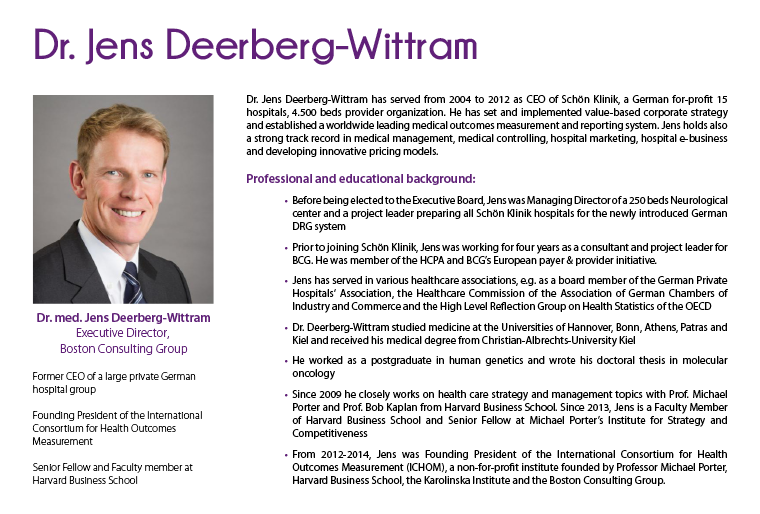
Appendix 2
